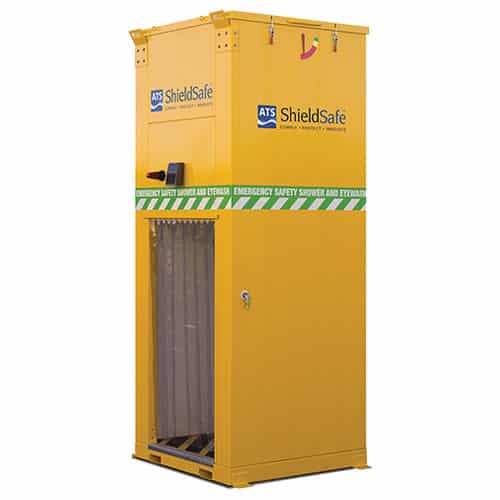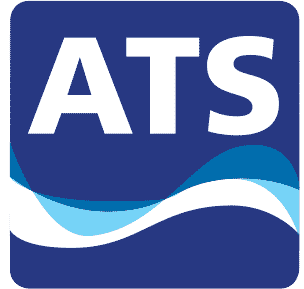
When a worker spills a chemical on their skin or eyes, adrenaline begins shooting through their system. They usually start to panic trying to get to the safety shower and may not see obstacles in their way. Their capacity to navigate obstructions begin to wane, especially if they can’t see very well. For this reason, it’s imperative that you take into considerate the safety shower location, as well as other safety shower obstructions – to ensure they don’t further compromise the victim’s safety.
Why are Doorways Considered Safety Shower Obstructions?
Many safety showers have doors that allow you to step in and have privacy. You would think having a doorway that opens away from a safety shower would be OK since you could just pull it open; however, it’s still considered an obstruction. If chemicals get in your eyes and you can’t see well or not at all, you may not be able to find a doorknob or handle. Not only that but if you have corrosive chemicals on your hands and you must pull open a door, you get the chemical on the door itself. If another co-worker comes to your aid, they may expose their skin to the chemical. The only exception to this rule is if the hazard is non-corrosive, then one door can be present, as long as it’s facing toward the shower. Doors need to swing in the same direction as the path of the victim, so ensuring your safety shower swings like a saloon door allows the victim to bust through the door quickly and get out quickly, as well.
What is Considered an Obstacle Concerning Safety Shower Location?
Regarding ANSI Z358.1 Standard, the section that mentions the accessibility of a user to a unit can’t be ignored. The two sections state that a [safety] “Shower must be within 10 seconds of hazard” and “Station must be on the same level as the hazard, obstruction free.” The standard doesn’t specifically define “obstruction,” but we can ascertain intent with these two sections that clarify the meaning. The 2014 standard also requires that all safety shower and eyewash units remain on the same floor or level as workers, and within 6 inches minimum from the wall or nearest obstruction. Also, eyewash stations are to be located within ten seconds or roughly fifty-five feet of hazardous areas.
What Other Obstructions Should I be Aware of?
Besides the location and doorway safety shower obstructions, there are many other things to look out for. If you have any of these safety shower obstacles, it will compromise the safety of workers and result in non-compliance:
- Stacked materials
- Barrels or boxes
- Stairs
- Hoses
- Tubing
- Partitions
- Trash cans
- Raw materials
- Other stored items



ATS ShieldSafe Won’t Compromise Worker Safety
At ATS ShieldSafe, we assure you that all our safety showers meet the ANSI standard and are built to withstand harsh climates. We also take into consideration doorway obstacles, so all our enclosed safety shower doors are built saloon-style. This allows the victim to go right through them without the worry of needing to pull on handles or knobs. Contact our experts at ATS for more information at 800.747.9953.


